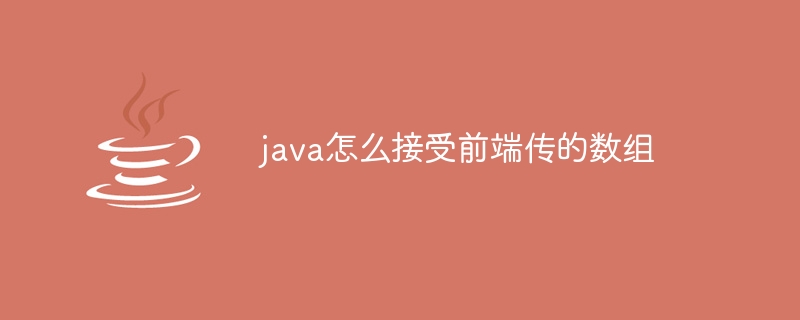java怎么接受前端传的数组
在java中接收前端传递的数组有两种方法:使用请求参数:适用于少量数据,通过请求url传递,用httpservletrequest获取。使用请求正文:适用于大量数据,通过json或xml格式传递,用@requestbody注解映射到java对象。

如何使用Java接收前端传递的数组
在Java中,接收前端传递的数组可以通过使用请求参数或请求正文两种方式。
1. 使用请求参数
这种方法适用于需要传递少量数据的情况。可以在请求URL中添加参数,并在Java中使用HttpServletRequest对象获取这些参数。
示例:
前端代码:
const array = [1, 2, 3];
const url = 'http://localhost:8080/api/v1/endpoint';
const params = new URLSearchParams({
'array': array
});
fetch(url + '?' + params);Java代码:
import javax.servlet.ServletException; import javax.servlet.annotation.WebServlet; import javax.servlet.http.HttpServlet; import javax.servlet.http.HttpServletRequest; import javax.servlet.http.HttpServletResponse; @WebServlet("/api/v1/endpoint") public class EndpointServlet extends HttpServlet { @Override protected void doGet(HttpServletRequest req, HttpServletResponse resp) throws ServletException, IOException { String[] array = req.getParameterValues("array"); // 处理数组... } }
2. 使用请求正文
这种方法适用于需要传递大量数据的情况。可以在请求正文中使用JSON或XML等格式传递数据,并在Java中使用@RequestBody注解将正文映射到一个Java对象。
示例:
前端代码:
const array = [1, 2, 3];
const url = 'http://localhost:8080/api/v1/endpoint';
fetch(url, {
method: 'POST',
headers: {
'Content-Type': 'application/json'
},
body: JSON.stringify({
'array': array
})
});Java代码:
import javax.servlet.ServletException; import javax.servlet.annotation.WebServlet; import javax.servlet.http.HttpServlet; import javax.servlet.http.HttpServletRequest; import javax.servlet.http.HttpServletResponse; @WebServlet("/api/v1/endpoint") public class EndpointServlet extends HttpServlet { @Override protected void doPost(HttpServletRequest req, HttpServletResponse resp) throws ServletException, IOException { String contentType = req.getContentType(); if (contentType.equals("application/json")) { BufferedReader reader = new BufferedReader(new InputStreamReader(req.getInputStream())); String json = reader.readLine(); JSONObject jsonObject = new JSONObject(json); int[] array = jsonObject.getJSONArray("array").toIntArray(); // 处理数组... } } }
以上就是java怎么接受前端传的数组的详细内容,更多请关注硕下网其它相关文章!
